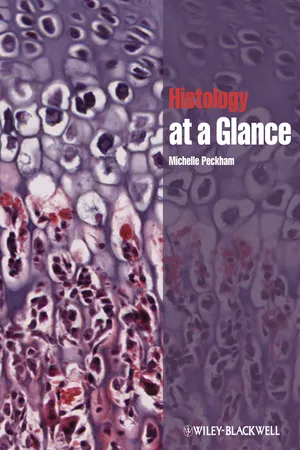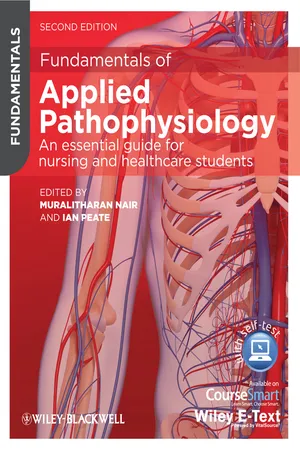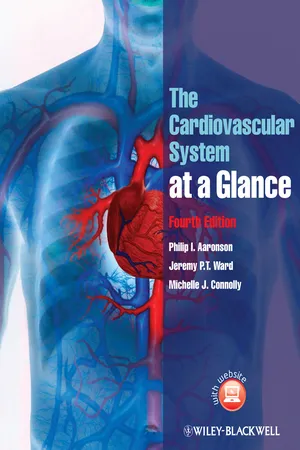Blood
Blood is a vital bodily fluid that transports oxygen and nutrients to cells and removes waste products. It consists of red blood cells, white blood cells, platelets, and plasma. Red blood cells contain hemoglobin, which binds to oxygen, while white blood cells play a key role in the immune system, and platelets are essential for blood clotting.
8 Key excerpts on "Blood"
- eBook - ePub
Essential Physiological Biochemistry
An Organ-Based Approach
- Stephen Reed(Author)
- 2013(Publication Date)
- Wiley(Publisher)
...Plasma, which accounts for approximately 60% of the total volume, carries a wide range of small and medium-sized metabolites; some are simply dissolved in solution (93% of the plasma is water), others are carried by specific carrier proteins. The chemical composition of the plasma is complex and reflects the chemical composition inside cells, which is why Blood tests are so commonly used in diagnosis to ‘see’ the biochemical events occurring in tissues. The formed cellular elements of the Blood perform several functions: defence against Blood loss from bleeding (platelets, also called thrombocytes), defence against infection and immune surveillance (white cells, leucocytes), and gas transport and pH buffering (red cells, erythrocytes). Haematopoiesis, the formation of the cellular components of the Blood, the red and white Blood cells and the platelets occurs in the bone marrow of the adult. Red cell production also takes place in the liver in the fetus from approximately 2 months of gestation until about 15 days after birth. Despite the great variation in structure and function of the Blood cells, they all arise from the same haematopoietic stem cell (HCS) line (Figure 5.1). Development and maturation of the individual cell lineages is a complex process relying on appropriate stimulation and regulation by humeral (soluble hormone-like) factors and by direct cell-cell interactions. Blood cell proliferation and differentiation are responsive processes allowing the body to meet changing demands arising from, for example, anaemia or infection. The humoral factors include numerous cytokines and growth factors, which act as classical endocrine, paracrine or autocrine regulators. Developing cells are sensitive to a range of such factors at all times during their maturation and, in the case of white Blood cells, during their existence within the circulation...
- eBook - ePub
- Michelle Peckham(Author)
- 2011(Publication Date)
- Wiley-Blackwell(Publisher)
...13 Blood Content and functions of Blood Blood transports gases, nutrients, waste, cells, and hormones throughout the body. It helps to regulate pH, temperature and water content of cells, protects against Blood loss via clotting, and protects against disease through the actions of white Blood cells and antibodies. Blood consists of cells (~45%) and plasma (~55%). All the cells are made in the bone marrow. The cells include red Blood cells (erythrocytes: ~5 x 10 6 per mL), white Blood cells (leucocytes: ~2 x 10 3 per mL), and platelets (thrombocytes: ~2 x 10 5 per mL). Blood plasma contains water (92%), proteins (such as hormones, serum albumin, and serum globulin), lipids (such as cholesterol), salts (such as urea), and glucose. Red Blood cells Red Blood cells (erythrocytes) are ‘born’ in the bone marrow, lose their nuclei, and become packed full of hemoglobin, which binds oxygen and carbon dioxide. These biconcave cells move through narrow capillaries more easily without a nucleus. Red Blood cells are 7µm diameter, and are eosinophilic due to their high protein content (Fig. 13a). In sickle cell anemia, red Blood cells have abnormal shapes, including the characteristic ‘sickle’ cell shape due to mutations in hemoglobin (Fig. 13b). Cells are less deformable, and can get stuck in the capillaries, reducing Blood flow, causing pain and organ damage. The cells circulate for about 120 days, before disposal in the liver. About 3 x 10 6 erythrocytes die and are scavenged by the liver every second. White Blood cells White Blood cells are less common than red Blood cells, as shown by a Blood smear (Fig. 13a). There are five main type of white Blood cell (leucocytes; Fig...
- Ian Peate, Muralitharan Nair, Ian Peate, Muralitharan Nair(Authors)
- 2011(Publication Date)
- Wiley-Blackwell(Publisher)
...As the Blood is circulating throughout the body, cells are constantly extracting nutrients, hormones, electrolytes, oxygen and other substances and excreting unwanted wastes into the Blood. Blood is transported throughout the body by a network of Blood vessels leading away and returning to the heart. The main types of Blood vessels include arteries, arterioles, capillaries, venules and veins. Another important part of the circulatory system is the lymphatic system which drains the fluid called lymph. The lymphatic system consists of the lymph vessels, lymph nodes and lymph glands such as the spleen and the thymus gland. This chapter will focus on the composition, structure and functions of various Blood cells, discuss the structure and functions of the Blood vessels, factors affecting Blood pressure and the structure and functions of the lymphatic system. Composition of Blood Blood consists of formed elements such as red Blood cells (erythrocytes), leucocytes (white Blood cells) and platelets. The fluid portion of Blood is called plasma which contains different types of proteins and other soluble molecules. When a Blood sample is centrifuged, the formed elements accounts for 45% of the Blood and plasma makes up 55% of the total Blood volume. Between the plasma and erythrocytes lies the buffy coat which consists of white Blood cells and platelets (see Figure 12.1). The percentage of the formed elements constitutes the haematocrit or packed cell volume. Haematocrit is a Blood test that measures the percentage of red Blood cells in whole Figure 12.1 Components of Blood (Tortora and Derrickson 2009) Figure 12.2 Cells of the Blood (Tortora and Derrickson 2009) Blood. The volume of Blood is constant unless a person has physiological problems such as haemorrhage. Thus, Blood is composed of plasma, a yellowish liquid containing nutrients, hormones, minerals and various cells, mainly red Blood cells, white Blood cells and platelets (see Figure 12.2)...
- eBook - ePub
Fundamentals of Anatomy and Physiology
For Nursing and Healthcare Students
- Ian Peate, Suzanne Evans, Ian Peate, Suzanne Evans(Authors)
- 2020(Publication Date)
- Wiley-Blackwell(Publisher)
...The Blood vessels form a network that allows Blood to flow from the heart to all living cells and back to the heart. Blood has numerous functions including the transportation of nutrients, respiratory gases such as oxygen and carbon dioxide, metabolic wastes such as urea and uric acid, hormones, electrolytes and antibodies. As the Blood is circulating throughout the body, cells are constantly exchanging nutrients, hormones, electrolytes, oxygen and other substances with it, as well as excreting unwanted wastes into the Blood. Blood is transported throughout the body by a network of Blood vessels, some of which lead away and some which return to the heart. The main types of Blood vessels include arteries, arterioles, capillaries, venules and veins. Another important part of the circulatory system is the lymphatic system, which drains a fluid called lymph. The lymphatic system consists of the lymph vessels, lymph nodes and lymph glands such as the spleen and the thymus gland. This chapter will focus on the composition, structure and functions of various Blood cells, discuss the structure and functions of the Blood vessels, factors affecting Blood pressure and the structure and functions of the lymphatic system. Components of Blood Blood consists of formed elements such as red Blood cells (erythrocytes), leucocytes (white Blood cells) and platelets. The fluid portion of Blood, plasma, contains different types of proteins and other soluble molecules. When a Blood sample is centrifuged, the formed elements account for 45% of the Blood and plasma makes up 55% of the total Blood volume. Normally, more than 99% of the formed elements are cells named for their red colour (red Blood cells). White Blood cells (pale in appearance) and platelets comprise less than 1% of the formed elements. Between the plasma and erythrocytes lies the buffy coat, which consists of white Blood cells and platelets (Figure 8.1)...
- eBook - ePub
Fundamentals of Applied Pathophysiology
An Essential Guide for Nursing and Healthcare Students
- Muralitharan Nair, Ian Peate, Muralitharan Nair, Ian Peate(Authors)
- 2013(Publication Date)
- Wiley-Blackwell(Publisher)
...It has a high viscosity which offers resistance to Blood flow. The red Blood cells and proteins contribute to the viscosity of Blood, which ranges from 3.5 to 5.5 compared with 1.0 for water. The more red Blood cells and plasma proteins in Blood, the higher the viscosity and the slower the flow of Blood. The specific gravity (density) of Blood is 1.045–1.065 compared with 1.000 for water, and the pH of Blood ranges from 7.35 to 7.45. Functions of Blood Overall, there are three categories of Blood function: transportation regulation protection. Transportation Red Blood cells in the Blood transport oxygen from the lungs to body tissues and waste products of cellular metabolism from the body tissues to the kidneys, liver, lungs and sweat glands for elimination from the body. Blood also transports nutrients, hormones, clotting factors and enzymes throughout the body to maintain homeostasis. Regulation Blood regulates Blood clotting to stop bleeding; body temperature by increasing or decreasing Blood flow to the skin for heat exchange; and acid–base balance to maintain the pH of Blood within a normal range (7.35–7.45). It also regulates fluid and electrolyte balance through renal function. Protection Blood defends the body against bacteria and viruses (pathogens) in several ways. Some white Blood cells, e.g. the neutrophils, engulf and destroy pathogens while lymphocytes produce and secrete antibodies into Blood. Antibodies in the Blood play a vital role in the inflammatory and immune response. These responses prevent Blood loss after an injury by initiating the clotting mechanisms, without which the person will bleed to death. Clotting involves platelets, the plasma protein fibrinogen and the clotting factors. Plasma Plasma is the liquid part of the Blood and is composed of water (91%), proteins (8%; albumin, globulin, prothrombin and fibrinogen), salts (0.9%; sodium chloride, sodium bicarbonate and others) and the remaining 0.1% is made up of organic materials, e.g...
- eBook - ePub
- Philip I. Aaronson, Jeremy P. T. Ward, Michelle J. Connolly(Authors)
- 2012(Publication Date)
- Wiley-Blackwell(Publisher)
...5 Constituents of Blood The primary function of Blood is to deliver O 2 and energy sources to the tissues, and to remove CO 2 and waste products. It contains elements of the defence and immune systems, is important for regulation of temperature and transports hormones and other signalling molecules between tissues. In a 70-kg man Blood volume is ∼5500 mL, or 8% of body weight. Blood consists of plasma and Blood cells. If Blood is centrifuged, the cells sediment as the packed cell volume (PCV, haematocrit), normally ∼45% of total volume (i.e. PCV = 0.45) in men, less in women (Figure 5). Plasma The plasma volume is ∼5% of body weight. It consists of ions in solution and a variety of plasma proteins. Normal ranges for key constituents are shown in Figure 5. After clotting, a straw-coloured fluid called serum remains, from which fibrinogen and other clotting factors have been removed. The relative osmotic pressures of plasma, interstitial and intracellular fluid are critical for maintenance of tissue cell volume, and are related to the amount of osmotically active particles (molecules) per litre, or osmolarity (mosmol/L); as plasma is not an ideal fluid (it contains slow diffusing proteins), the term osmolality (mosmol/kg H 2 O) is often used instead. Plasma osmolality is ∼290 mosmol/kg H 2 O, mostly due to dissolved ions and small diffusible molecules (e.g. glucose and urea). These diffuse easily across capillaries, and the crystalloid osmotic pressure they exert is therefore the same either side of the capillary wall. Proteins do not easily pass through capillary walls, and are responsible for the oncotic (or colloidal osmotic) pressure of the plasma. This is much smaller than crystalloid osmotic pressure, but is critical for fluid transfer across capillary walls because it differs between plasma and interstitial fluid (see Chapter 21). Oncotic pressure is expressed in terms of pressure, and in plasma is normally ∼25 mmHg...
- eBook - ePub
Fundamentals of Children and Young People's Anatomy and Physiology
A Textbook for Nursing and Healthcare Students
- Ian Peate, Elizabeth Gormley-Fleming, Ian Peate, Elizabeth Gormley-Fleming(Authors)
- 2021(Publication Date)
- Wiley-Blackwell(Publisher)
...Chapter 8 Blood Barry Hill Department of Nursing, Midwifery and Health, Northumbria University, Newcastle upon Tyne, UK Aim The aim of this chapter is to introduce the paediatric nursing student to the Blood and circulatory system of the child. Learning outcomes On completion of this chapter, the reader will be able to: Describe the normal composition and properties of Blood. List the functions of erythrocytes (red Blood cells), leucocytes (white Blood cells), thrombocytes (platelets) and plasma. Explain what is meant by haemopoiesis and how Blood clotting occurs. Explain the ABO and Rh systems of Blood typing. Describe the structures of the arteries, veins and capillaries, and list the differences between the arteries and veins. Explain what is meant by Blood pressure and how it is controlled/regulated. Test your prior knowledge What are the three main classes of Blood cells called? What are the components of Blood plasma? Name the five types of Blood vessel. What do we mean by Blood pressure? List the differences between arteries and veins. What is the function of red Blood cells? What is the function of platelets? What is the main function of white Blood cells? Which Blood cells are involved in Blood clotting? How many types of white Blood cells are there? Name them. Introduction In this chapter, we will be exploring the Blood. and circulatory system so that myths can be separated from facts. Without a doubt, Blood is truly a miraculous substance – hence, we talk about our life Blood because it does give us life, and without it we would die...
- eBook - ePub
- Peter Kam, Ian Power(Authors)
- 2015(Publication Date)
- CRC Press(Publisher)
...9 Physiology of Blood LEARNING OBJECTIVES After studying this chapter, the reader should be able to 1. Explain the principal role of Blood and its chief constituents. 2. Describe the origin of Blood cells. 3. Describe the features of iron metabolism and its role in the body. 4. Describe the structure and functions of platelets. 5. Describe the carriage of oxygen and carbon dioxide by the red cells. 6. Describe the physiology of Blood coagulation including the cell-based theory of coagulation. 7. Outline the mechanisms of fibrinolysis. 8. Explain the significance of Blood groups and their importance in Blood transfusions. 9. Describe the composition and functions of plasma. 10. Outline the physiological consequences of Blood transfusion. HAEMOPOIESIS AND ITS CONTROL Blood cells originate from a common pluripotential haemopoietic stem cell (PHSC). In the first 3–4 weeks of embryonic development, primitive erythroblasts are the first cells that develop from mesenchymal stem cells in the yolk sac. From 6 weeks to 7 months, the liver – and the spleen to a lesser extent – becomes haemopoietically active and reaches its peak activity at 5 months and then declines to the time of birth. Between 6 and 7 months of foetal life, the bone marrow becomes the main source of new Blood cells. At birth and during the first 5 years of life, red Blood cells are produced exclusively by the bone marrow. There is progressive fatty replacement of the marrow throughout the long bones and, by about 18–20 years of age, haemopoiesis occurs in the marrow confined to the central skeleton (vertebrae, pelvis, ribs, sternum and skull) and the proximal end of the femur and humerus. Haemopoietic progenitor cells The PHSCs give rise to all mature Blood cells that circulate freely in the peripheral Blood. The stem cells undergo cell division and maturation in the bone marrow...







